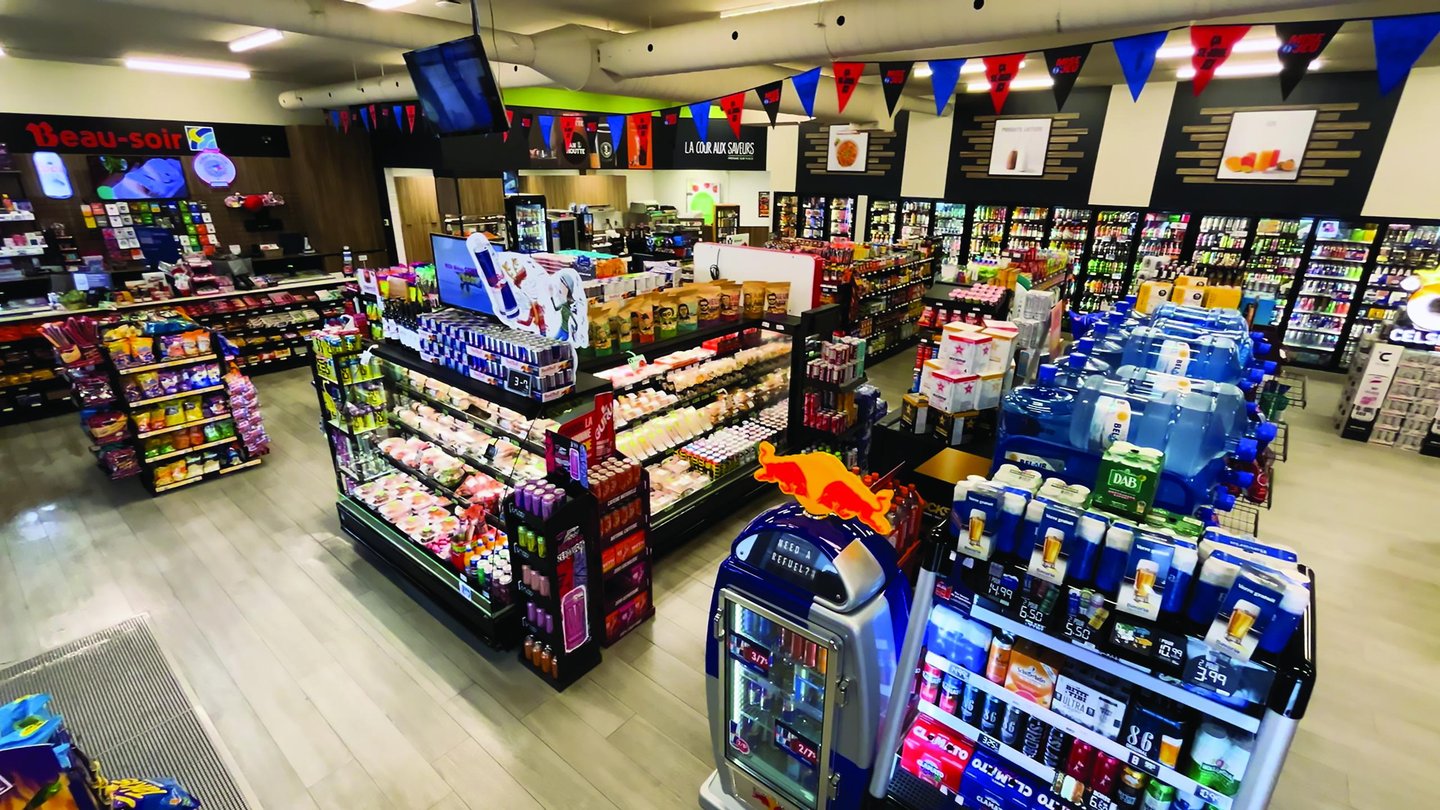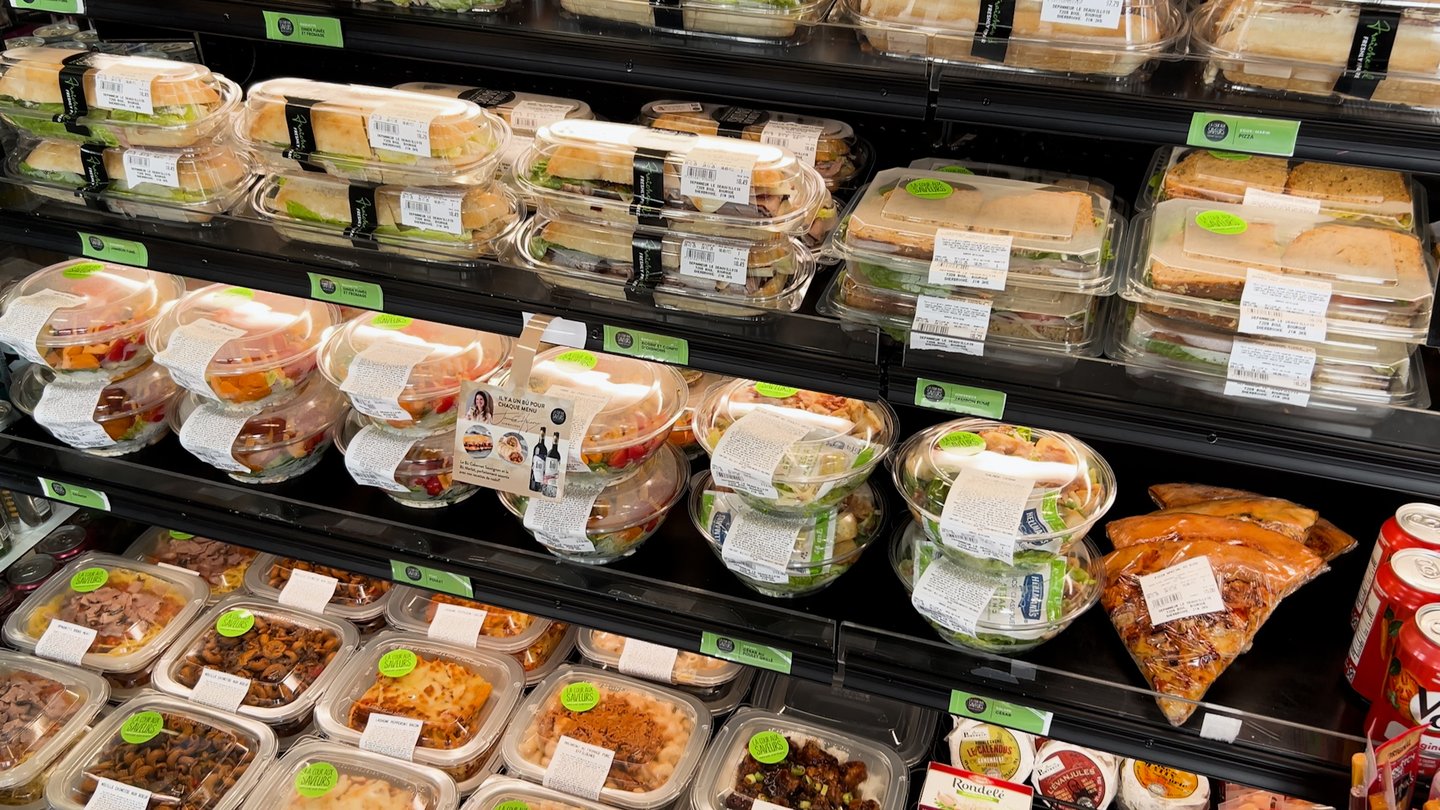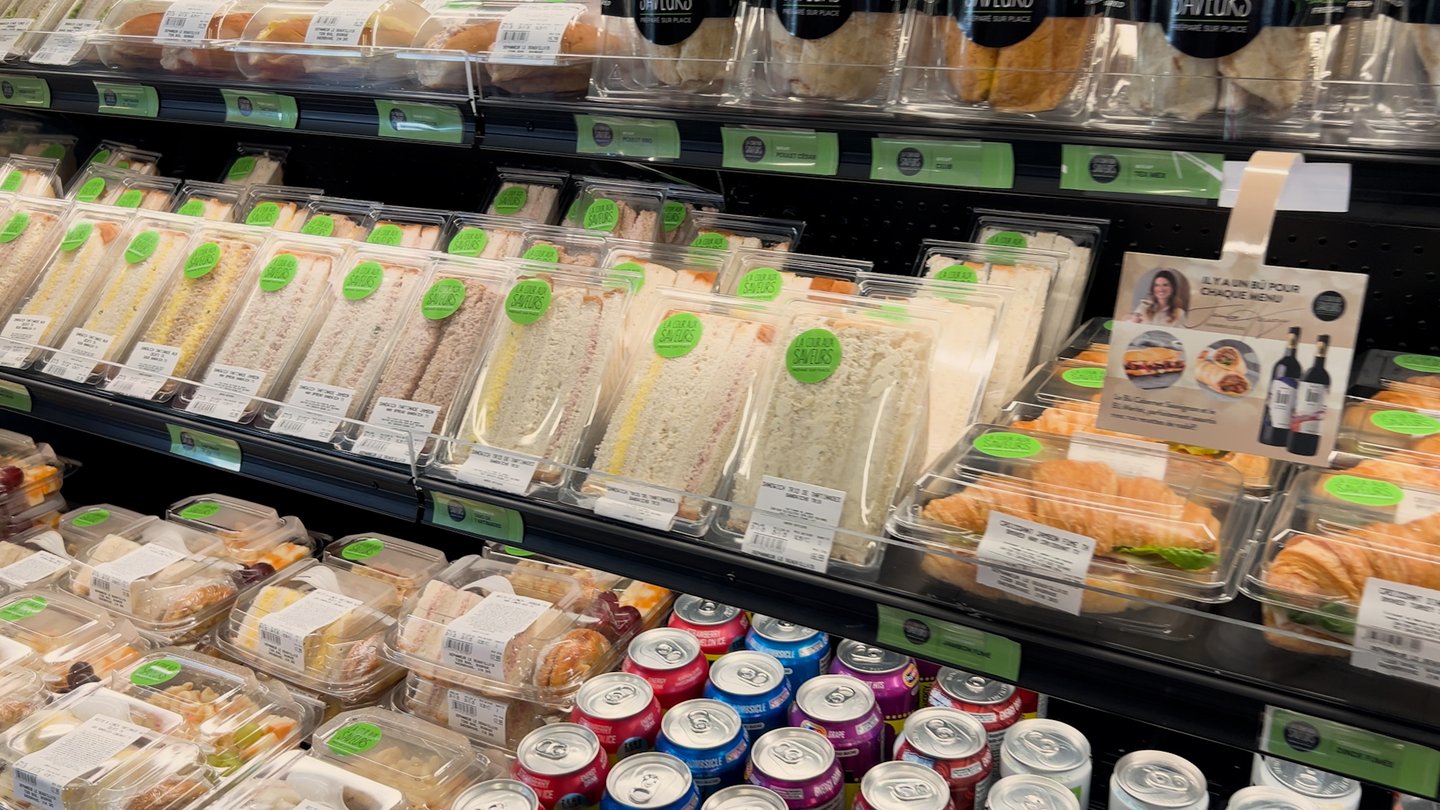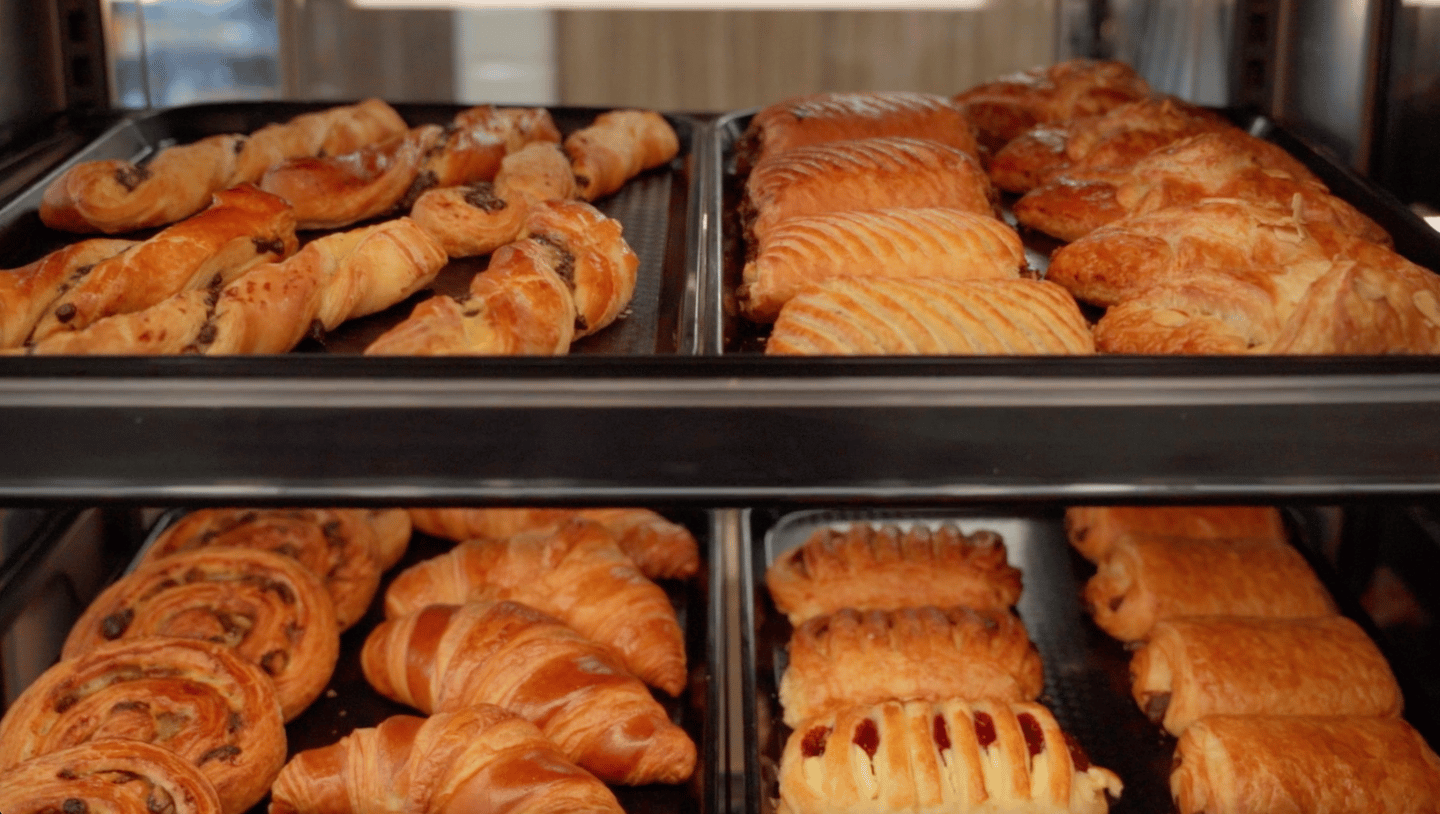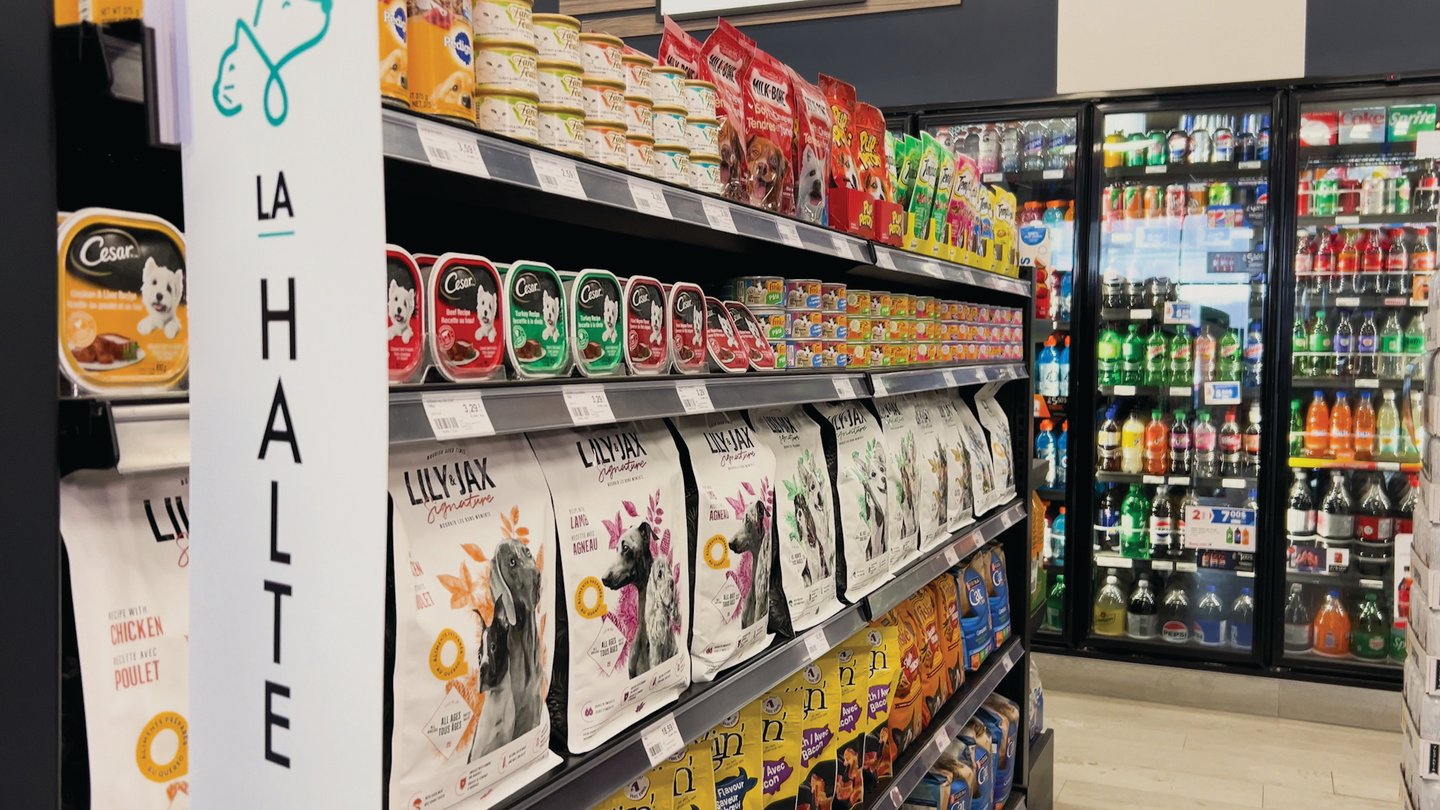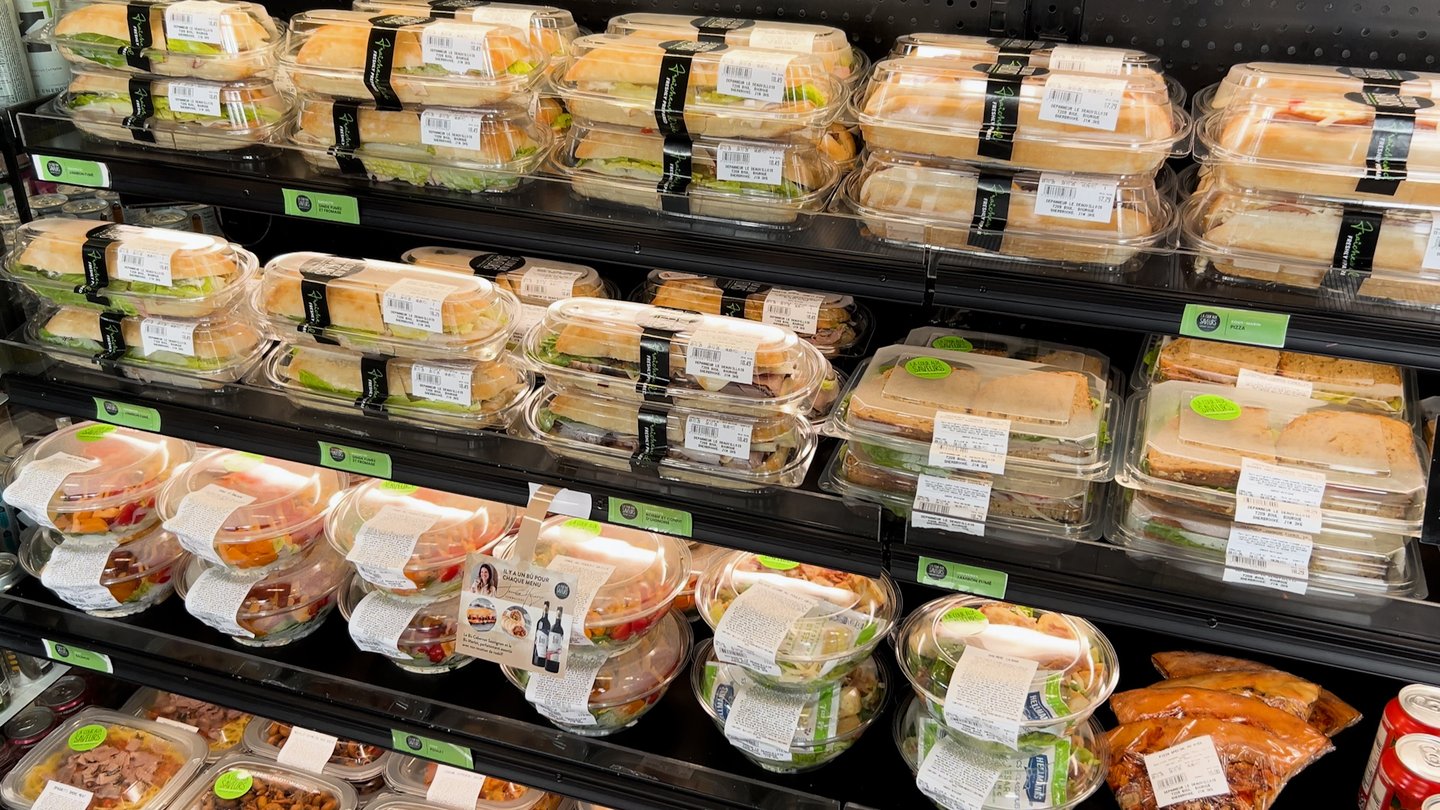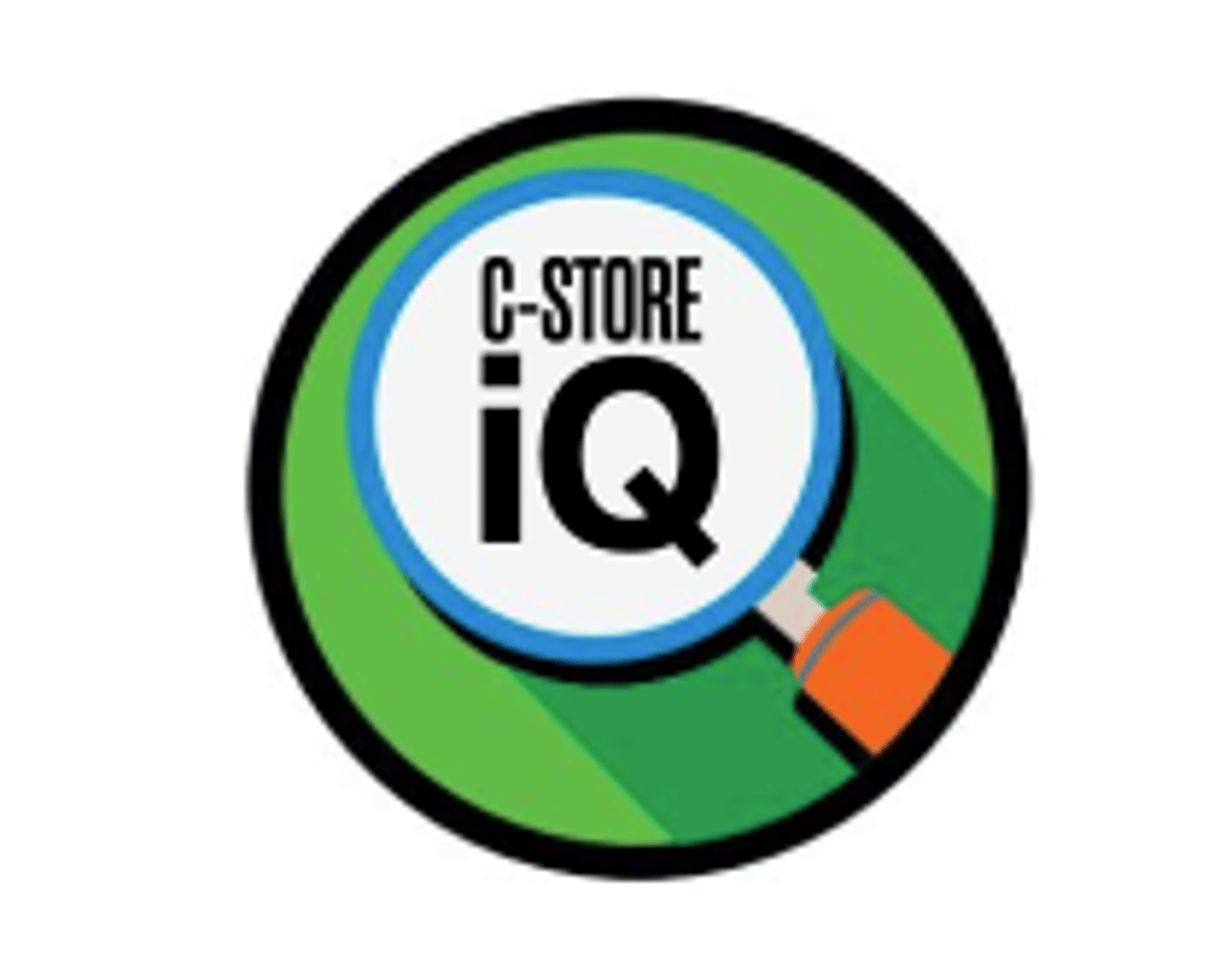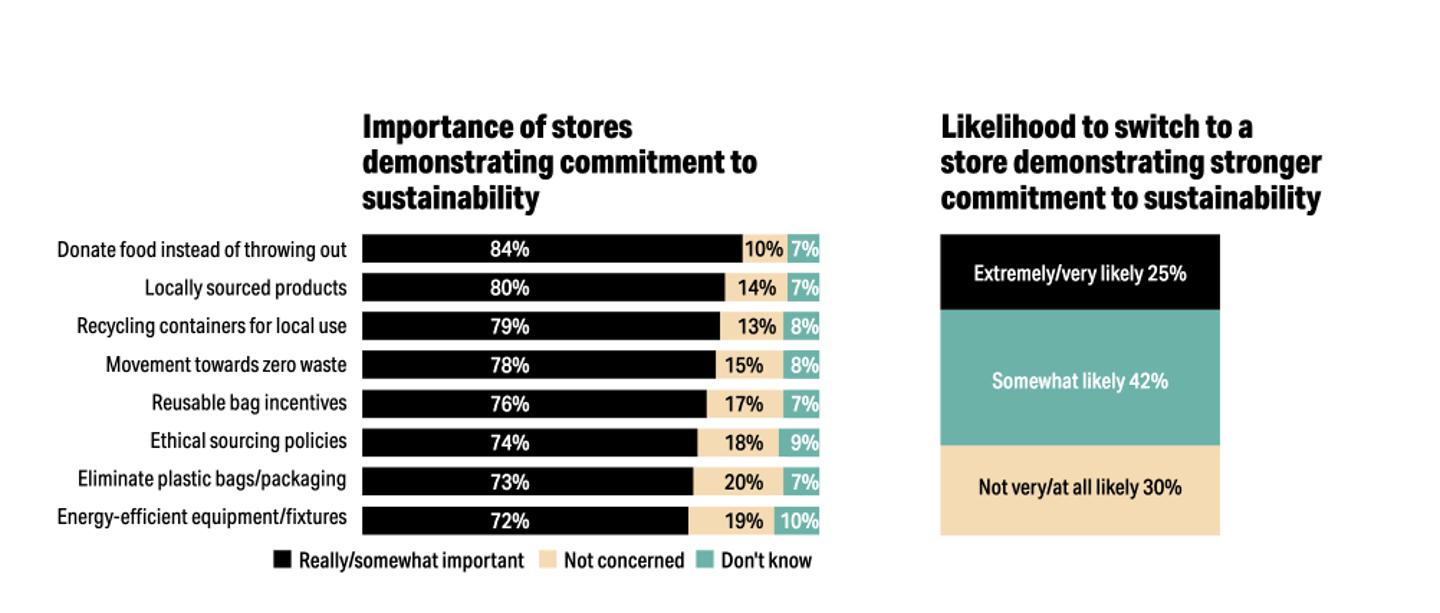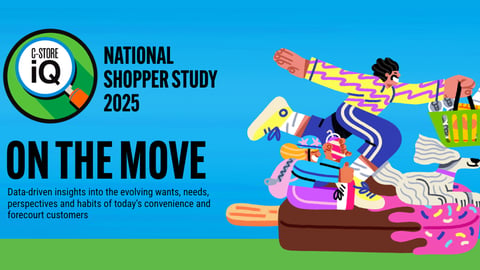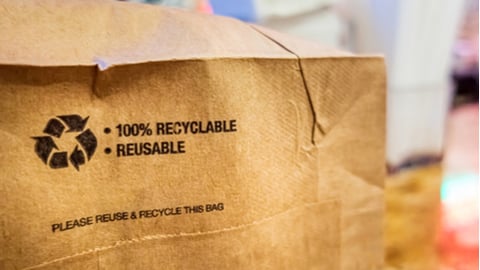2025 Sustainability Report: Style and substance intersect for store design
Groupe Beaudry, A major food distributor for the sector which also provides design consultation, offers up a vision for the next-generation c-store that seamlessly blends customer-focused layouts and merchandising with eco-conscious design.
Serge Nadeau, vice-president, projects and developments at Montreal-based Groupe Beaudry, says everything would flow from the customer—a welcoming shopping experience shaped around what people need and want, including items they traditionally never could find in a c-store.
“It would have multiple concepts to build consumer loyalty, including all-day ready-to-serve fresh meals, large frozen offers and a section for their pets, including food and treats for both cats and dogs,” he says. “By catering to varied needs, the store of the future would enjoy greater customer basket sizes, higher average purchase value and increased visits per loyal customer.”
And every design choice—from lighting to flooring—would be made with sustainability in mind, prioritizing energy efficiency and the use of eco-friendly materials.
Illustrating that the future is now for at least one store; Groupe Beaudry recently helped with the redesign of a store connected to a Petro-Canada in Sherbooke, Que. LED lights were installed everywhere, both outside and inside, including the ceiling to coolers and refrigeration display units.
Fresh design elevates fresh food
“The lighting is designed to highlight the natural colours of the food, making everything look fresh and inviting,” says Nadeau. “It really elevates the foodservice offering.” This includes sandwiches to salads all freshly prepared on-site and displayed alongside a colourful curated selection of beverages for easy grab-and-go.
Not just for the home, laminate was chosen for the flooring of the store. Made from recycled wood fibers and sawdust, it requires few natural resources to manufacture. “It’s also just a very practical solution for c-stores, being affordable, easy to clean and able to withstand wear and tear from heavy customer traffic in both summer and winter for many years,” adds Nadeau. “Laminate is also warmer than the look of ceramic.”
Jeff Doucette, general manager at Calgary-based retail data and solutions provider Field Agent Canada—who grew up in the sector as his parents were owners of a store—says c-stores are in the midst of transformation, driven in big part by foodservice.
“The industry has an opportunity to convey a new definition of convenience with design. And for c-stores with fuel pumps, the chance to make a statement about why gas customers should come into stores,” explains Doucette, suggesting c-stores look to QSRs for inspiration (see sidebar below).
Taking inspiration from QSR
For further sustainable design inspiration, look no further than QSRs—especially with c-stores continuing their expansion into foodservice. “They’re the next adjacent sector,” says Jeff Doucette, general manager at retail data and solutions provider, Field Agent Canada.
Describing it as “the store of the future,” he says a Tim Hortons store that opened in Regina in December 2024 is particularly impressive.
It features a suite of eco-friendly innovations: low-carbon concrete, a rainwater harvesting system for outdoor irrigation, a living green roof that enhances insulation and manages stormwater, a hybrid tankless water heater that provides on-demand heating to reduce standby energy loss, and furniture crafted from responsibly sourced, FSC-certified Canadian maple.
Of the performance of these initiatives, “some will exceed our expectations and may be rolled out across Tim Hortons locations nationwide, while others may not perform as hoped,” says franchisee Mike Di Stasi. “Testing and learning are essential steps to continually improve and innovate.”
A moss wall also features the Tim Hortons logo crafted entirely from recycled scrap metal.
In addition to saving on energy costs, Doucette says the store’s innovative design distinguishes it from every competitor out there. “The thought put into the sustainability of a store says a lot about a brand, creating a halo effect on the customer experience. You can imagine customers thinking, ‘This quinoa salad probably is really fresh!’” he says.
New players, new ideas
New players in the sector are also breaking design norms. Polar Express Market is a fresh concept in Edmonton from Mohammad Tarek Hasan Chowdhury, an engineer, and Ali Salman, a real estate developer of modular and prefabricated real estate development. Salman is also chair of the Modular Building Institute, an international non-profit trade association serving modular construction. The two serve as directors of Polar Express Brands.
Modular construction processes typically reduce greenhouse gas emissions by more than 40%, according to the Canadian Home Builders’ Association. And with Polar Express Market, Chowdhury and Salman are looking to serve rural and Indigenous communities in Alberta with small-footprint c-stores.
Designed as a response to challenges like food security, the housing crisis and sustainability, “it combines a convenience store, cutting-edge hydroponics for year-round fresh produce, a state-of-the-art water filtration system and on-site housing for staff—ensuring sustainability, affordability, and local economic growth,” explained Salman on LinkedIn.
The first store is set to open this spring in Edmonton, located inside a two-story commercial building at 10965 124 St. It will serve as the flagship for Polar Express Market to branch out with its prefab stores in more rural locations in Alberta.
“We’re looking at between 10 to 18 modular stores over the next few years,” says Chowdhury. This includes the nearby towns Ponoka, which has a population of less than 10,000, and Spruce Grove, with fewer than 40,000 residents.
While Polar Express Brands didn’t have control over the building’s core energy, it made energy efficiency a top priority in every equipment purchase. That includes coolers with a R-290 classified refrigerant, which means they’re naturally occurring versus synthetic like Tetrafluoroethane. R-290 refrigerants are considered to have the lowest global warming potential.
The 700-sq.-ft. store will feature hot food and fresh hot coffee in partnership with Nespresso Canada, in addition to the typical c-store staples. Plans are for the prefab stores in smaller communities around Edmonton to feature handmade crafts and other items from Indigenous artisans. “We’ll have a separate shelf for them, with the hope of growing business with the communities,” says Chowdhury.
Eco-design: What's trending
Anthony Ruffolo, president of Scarborough, Ont.-based McCowan Design & Manufacturing, says the future of c-store design is being driven by a commitment to a greener planet and new product offerings.
1. The long game
Customers are improving their sustainability profile by using store fixtures with a long shelf life (pun intended). “That is, the fixtures look great for a very long time, reducing maintenance and replacement costs,” says Ruffolo. By using rust-resistant materials, McCowan’s forecourt merchandisers last four to five times longer than comparable products.
Its cabinet lines, meanwhile, use Canadian steel. Cabinets can then be aesthetically refreshed by changing doors and countertops instead of being completely replaced.
“Solid surface and metal counter tops are increasingly chosen for their outstanding durability and cleanliness,” adds Ruffolo. He recommends domestically manufactured lighting solutions for displays, which offer an impressive lifespan of 120,000 hours.
2. Tobacco walls
Increasingly, stores are using tobacco walls to drive profit with digital advertising screens or as a feature wall to display vendor products. “It has become common to vend tobacco in security cabinets under the counter,” notes Ruffolo. As a result, more stores are turning to metal undercounter cabinets with long lifespans, with McCowan’s offerings complete with a durable tobacco organizer.
3 Foodservice
“Foodservice offerings continue to increase in scope and sophistication,” says Ruffolo. “To meet these growing requirements, refrigeration is commonly being integrated into our modular cabinets.” Many modular cabinet manufacturers emphasize sustainable materials and environmentally responsible production methods.
As far as countertops in foodservice, “solid surface and metals are the new standard because of their outstanding durability and ease of cleaning,” he says. “Millwork features are being used to create warm and inviting environments. Aesthetics and cleanliness in the foodservice area are a valuable tool in helping to communicate the quality of your food offering to customers.
National Shopper Study
Sustainability + Buy Local Report: Actions big and small
By Michelle Warren
An overwhelming majority of shoppers say they would consider switching convenience stores based on a retailer’s sustainability efforts, according to new data from the 2025 C-store IQ National Shopper Study.
With the research team at Ensemble IQ, Convenience Store News Canada asked more than 2,000 c-store shoppers across the country to weigh in on sustainability issues.
An increasing number (70%) of shoppers are likely to switch stores, compared to 68% in the 2024 report.
Shoppers say convenience stores can demonstrate their commitment through initiatives such as donating food, sourcing local products and providing community recycling bins.
Gen Z (30%) and millennials (28%) are among the most ardent, saying they would be ‘extremely/very likely’ to act, compared to gen X (21%) and boomers (20%).
Overall, sustainability remains a priority for c-shoppers coast to coast, despite other pressures, such as the economy and global unrest.
The global unrest, namely in the form of traffic upheaval from the U.S., is spurring a new form of Canadian nationalism and the ‘Buy Local’ movement is unprecedented, as ‘Made in Canada’ takes root and brands across the country wave the maple leaf.
C-store IQ data shows that while supporting businesses in their community remains a primary motivation for shoppers, a growing number are also drawn to the perceived superior quality of locally sourced products.
This article originally appeared in the May/June 2025 issue of Convenience Store News Canada




